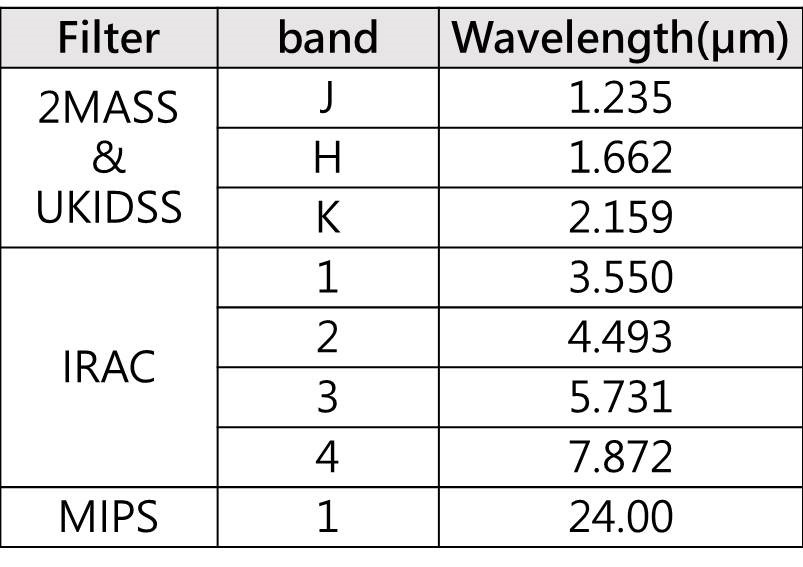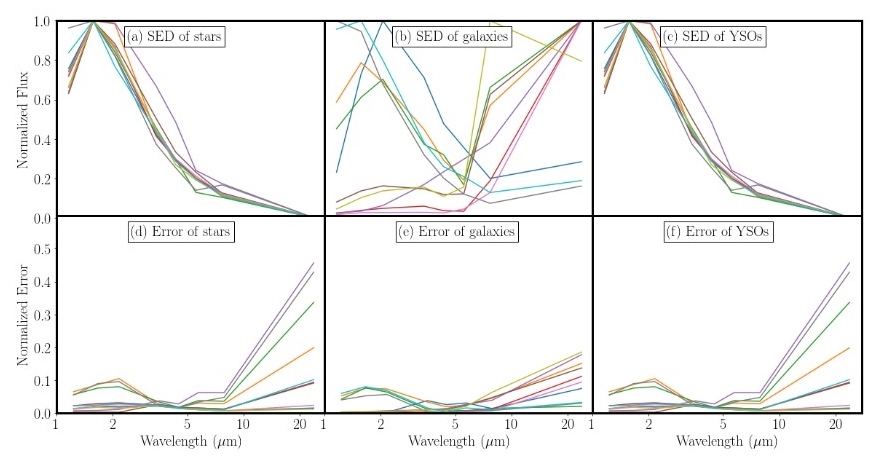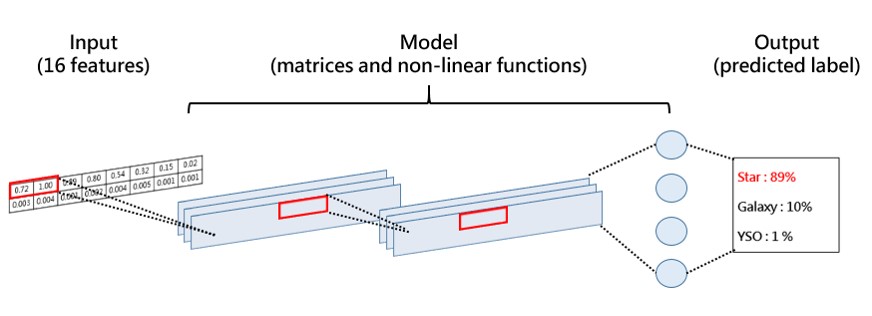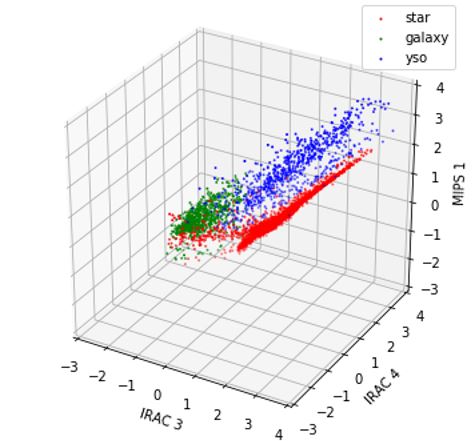

Astronomy Project:Searching for Young Stellar Objects
Introduction:
Accurate measurements of statistical properties, such as the star formation rate and the lifetime of young stellar objects (YSOs) in different stages, is essential for constraining the star formation theories. However, it is a difficult task to separate galaxies and YSOs based on spectral energy distributions (SEDs) alone, because they contain both thermal emission from stellar and dust around and no reliable theories can be applied to distinguish them.

(Caption) The 8 energy bands and their wavelengths included in our data.

(Caption) Typical SEDs (upper row) and their errors (bottom row) for stars, galaxies and YSOs (from left to right column). Note that, in order to show all results in the same scale, we have normalizied each SEDs (and their errors) to its maximum value.
Here we develop a machine learning algorithm using Convolutional Neural Network (CNN) to classify regular stars, galaxies, and YSOs, solely based on their SEDs. Superior to previous classifiers, our CNN model is solely trained by labeled data without a priori theoretical knowledge, and provides satisfactory results with high precision (>90%) and recall (>98%) for YSOs when data of only eight bands are included. Such high accurate performance is still maintained even using normalized data so that the distance effects are mostly removed. Finally, we show that a good classification can be made even from three bands in the long wavelengths regime, indicating the possible direction for future YSO research. Our CNN model could be also used for investigating other stellar objects in the whole sky.

(Caption) Our CNN model for the classification of the three stellar objects.

(Caption) Comparison of four different data sets in our project.

(Caption) Our CNN model for the classification of the three stellar objects.
Publication and AI model:
We also have made a link to the whole international society for the use of our AI model to find out YSOs: http://scao.astr.nthu.edu.tw
Research Team:
Gi-Ting Ho (Physics Division, National Center for Theoretical Sciences)
Yi-Lung Chiu (Institute of Astronomy, National Tsing Hua University)
Prof. Shih-Ping Lai (Institute of Astronomy, National Tsing Hua University)
Prof. Daw-Wei Wang (Department of Physics, National Tsing Hua University; Physics Division, National Center for Theoretical Sciences)
©copyright Artificial Intelligence for Fundamental Research (AIFR) Group